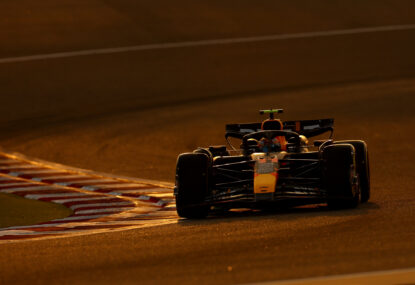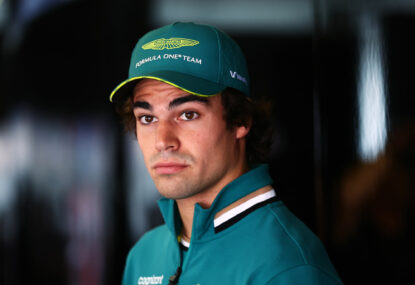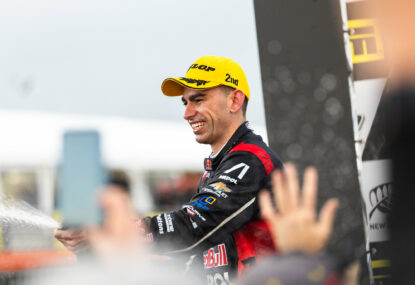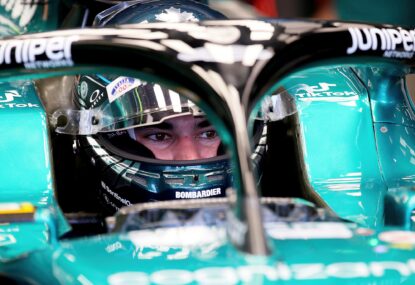The Caterham saga, now in its fifth year, appears to be entering its endgame. Caterham Sports Limited, the supplier of that critical component known as ‘the car’ has been placed in administration, putting the team’s future in serious doubt.
It is the second team of the three that entered the sport in 2010 to teeter on the brink of ruin, after HRT ceased operation at the end of 2012 – but then there was always a degree of inevitability in the now defunct team’s eventual collapse.
From the (relative) highs projected for the Caterham F1 Team, the fall was always going to be far more spectacular.
The Caterham F1 Team came into the world bright eyed and bushy tailed at the hands of millionaire AirAsia founder Tony Fernandes. It had a sound financial base that quickly translated into having a sophisticated factory base, and was powered by the business acumen of Fernandes himself.
It didn’t take long for Fernandes to sour on F1, however, and in July, after four years of poor performances, the Malaysian–British tycoon sold the team to Mysterious Owners, who have refused to identify themselves.
The team quickly descended into the ‘basket case’ realm.
Forty employees were sacked and sued for unfair dismissal. The team counter-sued for reputation damage. Persistent internal leaks suggested that the factory, which had ground to a halt at the time of sale, never resumed operation.
Then the first of the body blows: the factory was raided by the sheriff and a number of crucial items were seized. Though the team strenuously denied the criticality of what it purported to be a non-vital supplier company, it has since admitted that the placing of that supplier into the hands of creditors this week has “had devastating effects on the F1 team’s activities” and thrown the operation into doubt.
Crucially the licence holder 1Malaysia Racing Team (1MRT) remains unaffected and in possession of the intellectual property of the cars. Theoretically the team will be able to race on – though as we saw on Kamui Kobayashi’s car in Sochi, any broken parts will have to be mended without factory assistance. These are gaffer tape and paper clip moments.
This is all assuming the Mysterious Owners still want to be involved. Team principal Manfredi Ravetto recently said, “as far as the operation and management side is concerned, [the sale] is done” and that the Mysterious Owners are thus investing money to strengthen the team.
On Wednesday, however, they suddenly came to the realisation that Tony Fernandes never gave them the share in the company and therefore don’t own it after all. Huh.
Fernandes tweeted, “If you buy something you should pay for it. Quite simple.” Yet it is equally surprising that a man of Fernandes’ entrepreneurial ability can assert he no longer has anything to do with the team less than one month ago but now claim that he is yet to be paid for his former (or current) assets.
The future of the Caterham F1 team looks bleak.
That a Formula One team finds itself in such a position for the second time in as many years is unsurprising, and has been predictable since the FIA dropped its proposed budget cap in 2009. It did so despite granting four new teams F1 entries on the very premise of such a cost control, and immediately the first of them, USF1, folded. HRT stumbled through three seasons and likewise collapsed. Now Caterham finds itself drowning in the costly realities for Formula One.
To the FIA’s credit, it attempted to push through a cost cap again earlier this year, but was thwarted by the sport’s wealthiest teams, whose approval is needed for such a change.
All of this, of course, quietly plays into the hands of the sport’s commercial rights holder and Bernie Ecclestone. Fewer teams means less prize money need be subtracted from the sport’s revenue, bolstering profits.
Indeed, a philosophical shake-up has been on the cars for some time in the form of the controversial three cars per team proposal. The contractual trigger for such a model is a grid of fewer than ten teams, which means Caterham’s demise brings the concept one step away from realisation. Could Marussia survive battling on its own at the back? Will Sauber see the other side of its score-less 2014 season?
Ecclestone insists cash doesn’t drive this push; he believes Formula One will be healthier for the elimination of backmarkers in exchange for more front-running cars. An extra Ferrari, he says, is better than two Caterhams.
On the other hand, the smaller teams insist that being able to throw their hats into the ring against the likes of Ferrari and McLaren is in the DNA of Formula One.
But Caterham’s predicament is testament to a sport engineered against such a philosophy. Here is a team that entered the sport with massive investment, state-of-the-art facilities, and a strong business case – and today it’s on its knees.
More than the botched sale of a team, this week has proven that Formula One is withering in its current regulatory environment. Change is required, and with the FIA hamstrung on cost control, a seismic shift now seems inevitable.
Follow Michael as he talks largely to himself on Twitter @MichaelLamonato




































































































